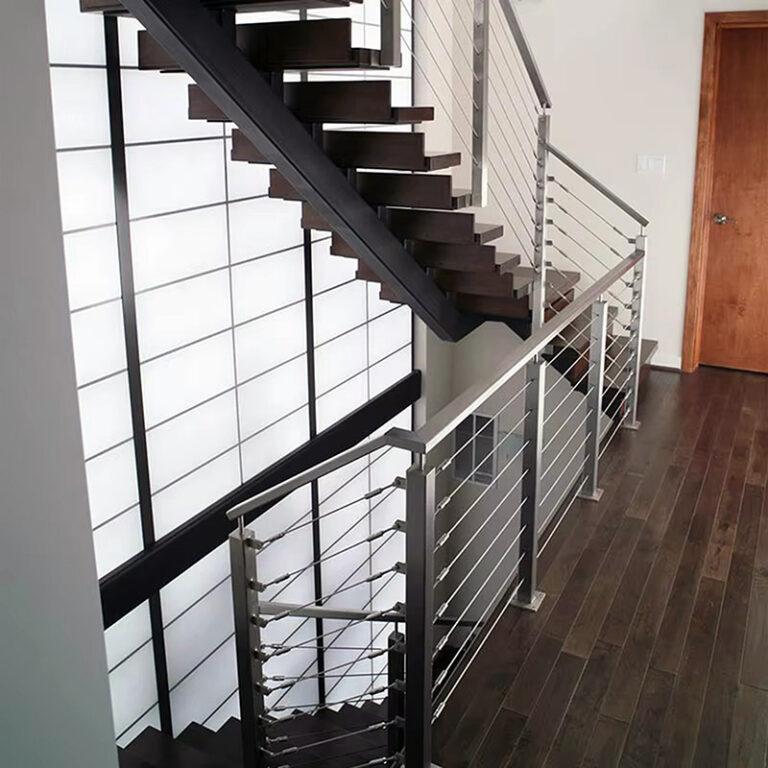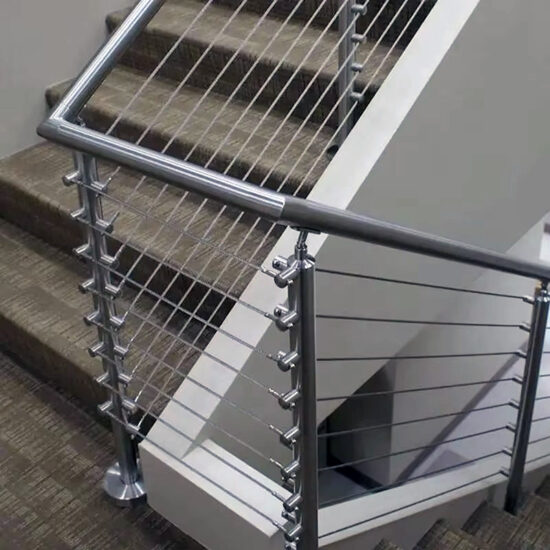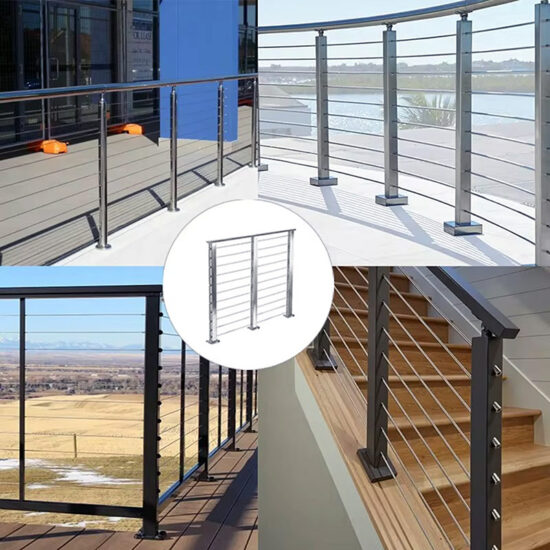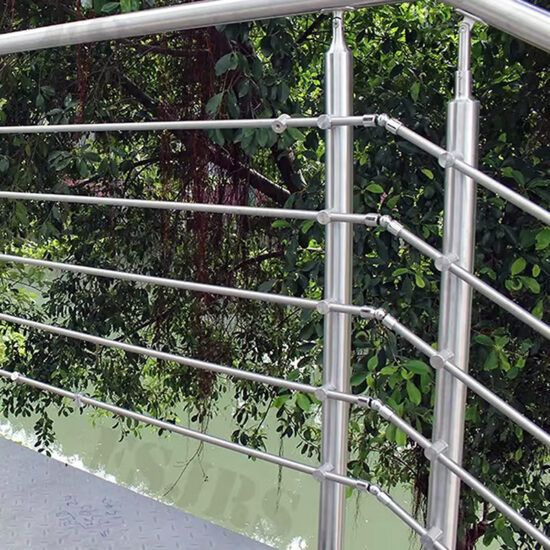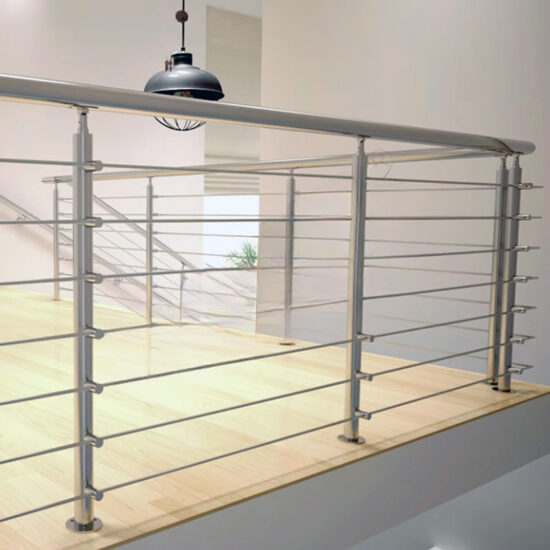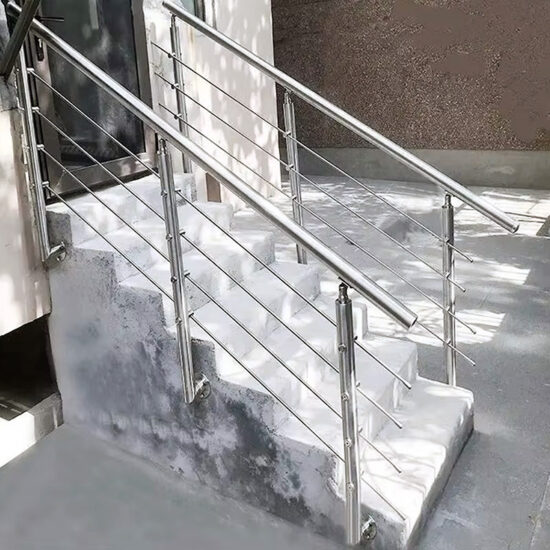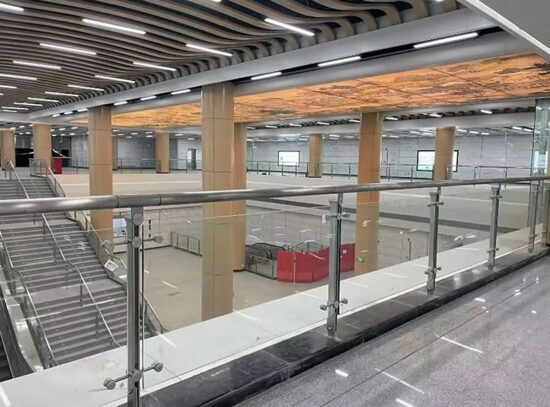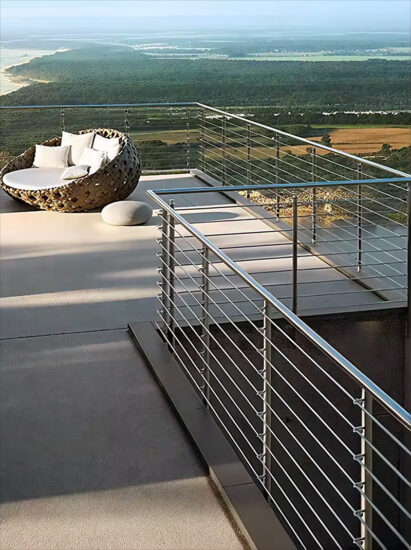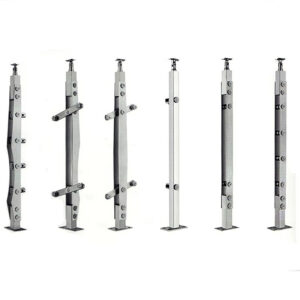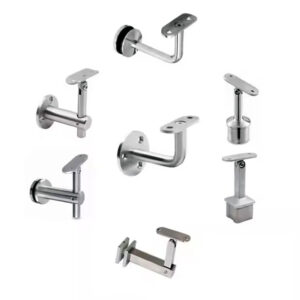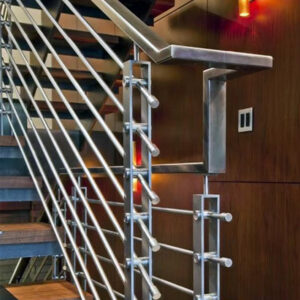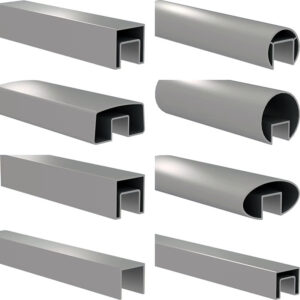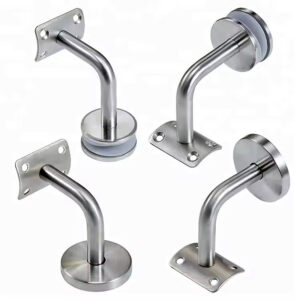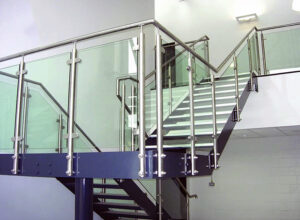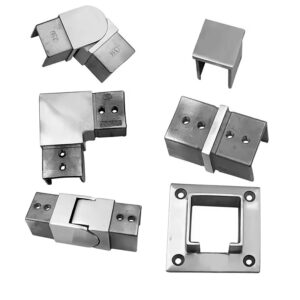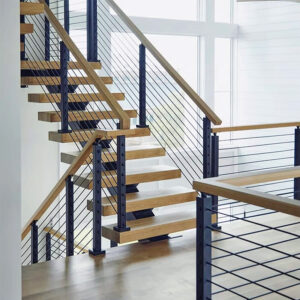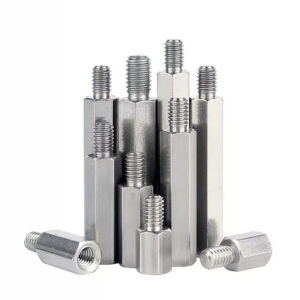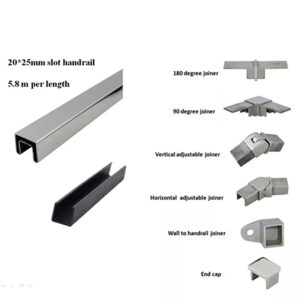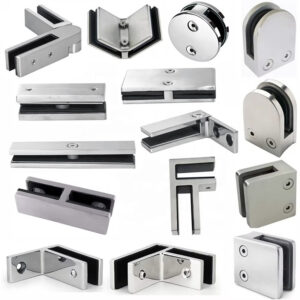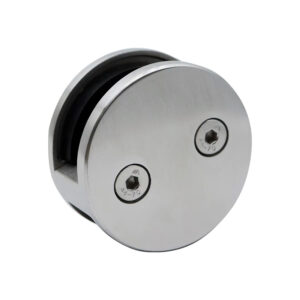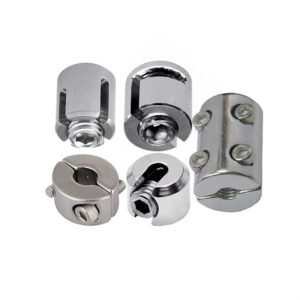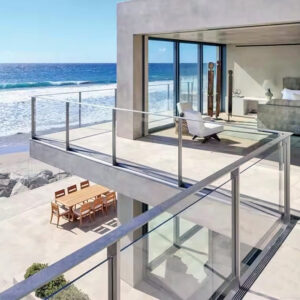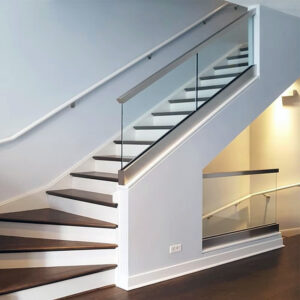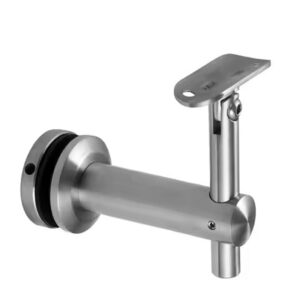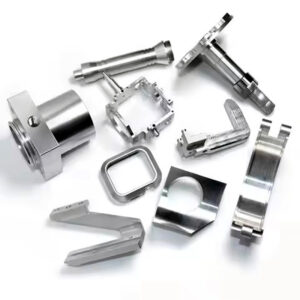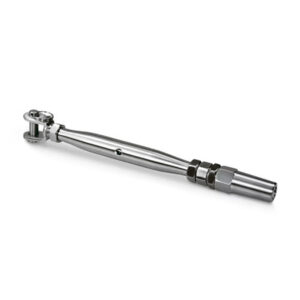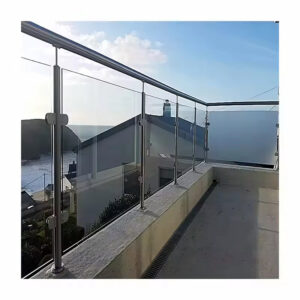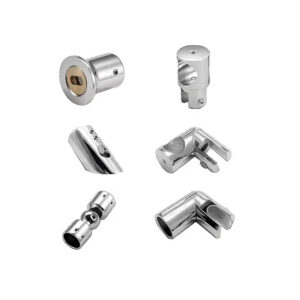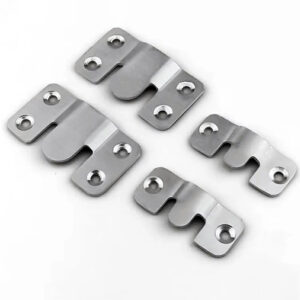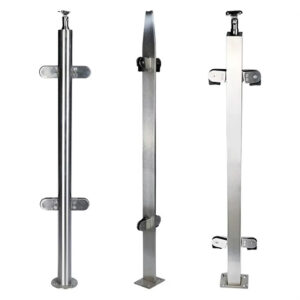Finding reliable railing systems shouldn’t require piecing together components from multiple suppliers while hoping everything fits correctly on-site. After 23 years in stainless steel manufacturing, we’ve learned that contractors and engineers need complete welded hanrail installation kits that arrive ready for efficient installation. No compatibility guesswork, no field modifications, no project delays waiting for missing hardware.
The difference between a smooth installation and a costly headache often comes down to having the right components working together as an integrated system. Here’s what complete installation kits deliver for real projects.
Complete Welded Hanrail Installation Kits: System Integration That Works
Welded hanrail installation kits solve the fundamental challenge of component compatibility by providing pre-engineered systems where every piece works together. These aren’t random hardware collections—they’re complete solutions designed around actual installation requirements.
Core System Components
Hanrail Systems: Wall-mounted, post-supported, and continuous rail configurations with matching brackets, end caps, and connection hardware. Standard 2″ and 2.5″ rail diameters accommodate most commercial and residential applications while maintaining IBC compliance for grip requirements.
Post and Mounting Systems: Stainless steel posts with integrated mounting plates, adjustable base connections, and rail attachment hardware. Surface-mount and embedded options handle different structural requirements without custom fabrication.
Glass Integration Hardware: When projects require glass infill panels, kits include compatible clamps, gaskets, and structural glazing components rated for wind and safety loads. All glass hardware matches rail finishes and maintains structural continuity.
Cable Railing Components: Complete cable runs with tensioning hardware, through-post fittings, and end connections. Marine-grade cable and stainless hardware maintain tension over time without constant adjustment.
Material Specifications for Real Performance
316 Stainless Steel: Marine-grade alloy for coastal installations, industrial environments, and high-maintenance applications. Higher molybdenum content provides superior corrosion resistance in chloride environments.
304 Stainless Steel: Standard commercial grade offering excellent corrosion resistance for most interior and protected exterior applications at lower material cost than 316 grade.
Surface Treatments: Brushed finishes hide minor scratches and maintain appearance with minimal maintenance. Mirror polish provides premium appearance but requires more frequent cleaning in high-traffic areas.
| Material Grade | Chloride Resistance | Cost Factor | Best Applications |
|---|---|---|---|
| 304 Stainless | Good | 1.0x | Interior, covered exterior |
| 316 Stainless | Excellent | 1.3x | Coastal, industrial, pool areas |
| 316L Low Carbon | Superior | 1.4x | Marine, chemical exposure |
▶ Get Material Selection Guide ◀
Welded Hanrail Hardware Kits 316L: Marine-Grade Performance
Marine and coastal projects demand welded hanrail hardware kits 316L specification to handle salt spray, humidity, and temperature cycling. These complete systems include low-carbon 316L stainless throughout—not just visible components.
Component Integration: All brackets, fasteners, gaskets, and structural elements use 316L specification. Mixed material grades create galvanic corrosion points that compromise long-term performance.
Welded Connection Advantages: Factory welding provides stronger, more consistent joints than field assembly. Controlled atmosphere welding eliminates contamination that reduces corrosion resistance in marine environments.
Performance Data: 316L installations in coastal environments maintain structural integrity and appearance for 15+ years with standard maintenance. Comparable 304 systems typically show visible corrosion within 3-5 years in similar conditions.
Technical Specifications: Load Ratings and Code Compliance
Understanding actual performance requirements helps specify the right system for each project. These specifications reflect real testing and field performance data.
| System Type | Load Rating (lbf) | Deflection @ Max Load | Code Compliance |
|---|---|---|---|
| Wall-Mount Rail | 200 per linear foot | L/120 maximum | IBC 1014.3 |
| Post-Supported | 50 lbf concentrated load | 1/4″ at top | ADA 505.3 |
| Glass Panel System | 50 lbf horizontal | L/175 maximum | IBC 2407 |
| Cable Railing | 200 lbf distributed | Cable sag < 4″ | IRC R312.1 |
Installation Time Estimates
| Project Scope | Traditional Assembly | Complete Kit System | Time Savings |
|---|---|---|---|
| 100 LF residential rail | 16-20 hours | 10-12 hours | 35-40% |
| Commercial stair system | 24-32 hours | 16-20 hours | 30-35% |
| Multi-level installation | 40-56 hours | 28-36 hours | 30-35% |
▶ Request Project-Specific Specs ◀
Real-World Applications: Marine Grade Welded Railing Components
Commercial and Industrial Projects
Office Buildings: Commercial welded installation systems for multi-story atriums, mezzanines, and stair systems where consistent appearance and reliable performance matter. Modular components accommodate standard structural dimensions while meeting accessibility requirements.
Manufacturing Facilities: Industrial environments require railing systems that withstand equipment vibration, chemical exposure, and heavy use. 316 stainless components maintain structural integrity and safety compliance in demanding conditions.
Public Infrastructure: Transit stations, government buildings, and educational facilities need railing systems that handle high traffic volumes with minimal maintenance. Complete installation kits ensure consistent installation quality across multiple contractor crews.
Residential and Multi-Family Applications
High-Rise Balconies: Wind loading and weather exposure require engineered systems with proven performance. Complete kits eliminate field engineering and ensure consistent structural performance across identical units.
Coastal Properties: Marine grade welded railing components handle salt spray, hurricane conditions, and temperature cycling. 316L systems maintain appearance and structural integrity where other materials fail within years.
Pool and Deck Areas: Chlorine exposure and constant moisture create aggressive corrosion conditions. Marine-grade complete systems provide long-term performance without ongoing replacement costs.
ODM Welded Hanrail Manufacturing: Custom Solutions That Scale
Standard systems handle most applications, but unique projects require ODM welded hanrail manufacturing capabilities that deliver custom solutions with production efficiency.
Custom Design Process
Engineering Integration: Custom projects start with structural requirements, architectural specifications, and installation constraints. Our 23 years of manufacturing experience helps identify potential issues before they become expensive field problems.
Prototype Development: Critical custom components undergo physical testing to verify performance before full production. This process prevents costly redesigns and installation delays.
Production Scaling: Custom solutions use standard manufacturing processes and proven material specifications. This approach provides custom performance without prototype pricing or extended lead times.
Quality Control Systems
Material Certification: All stainless steel components include mill test certificates verifying grade, chemistry, and mechanical properties. This documentation supports warranty claims and project specifications.
Welding Standards: All welded connections follow AWS D1.1 structural welding code with certified welders and documented procedures. Quality control includes visual inspection and periodic testing.
Dimensional Accuracy: CNC machining and fixture welding maintain tight tolerances across production runs. Components fit together correctly without field modifications.
▶ Discuss Custom Requirements ◀
Installation Support and Technical Resources
Pre-Installation Planning
Site Surveys: Complex installations benefit from pre-installation site verification to identify potential conflicts with structural, electrical, or mechanical systems. This process prevents costly surprises during installation.
Installation Sequencing: Multi-phase projects require coordination between railing installation and other trades. Complete kit systems simplify scheduling by reducing installation time windows.
Tool Requirements: Most installations require standard tools—drill motors, levels, torque wrenches, and basic hand tools. No specialized equipment or extensive training needed.
Technical Support During Installation
Installation Guidance: Phone and email technical support helps resolve field questions quickly. Our experience with thousands of installations provides practical solutions for unusual conditions.
Field Problem Resolution: When site conditions don’t match plans, technical support helps identify solutions using standard components or minimal field modifications.
Documentation Support: Installation manuals, torque specifications, and maintenance guidelines provide reference information for project completion and long-term performance.
| Support Resource | Availability | Response Time | Coverage |
|---|---|---|---|
| Phone Technical Support | Business hours | Immediate | Installation questions |
| Email Technical Support | 24/7 submission | 4-hour response | Design, specifications |
| Installation Documentation | Online access | Immediate | Standard systems |
| Custom Project Support | By appointment | Next business day | Engineered solutions |
Custom Welded Hanrail Packages: Tailored System Solutions
Custom welded hanrail packages address unique project requirements while maintaining the installation efficiency advantages of complete kit systems.
Customization Capabilities
Dimensional Modifications: Standard component designs adapt to non-standard post spacing, rail heights, or structural attachment points while maintaining load ratings and code compliance.
Finish Options: Standard brushed and mirror polish finishes handle most applications. Special finishes like colored coatings or textured surfaces accommodate specific architectural requirements.
Integration Hardware: Custom projects often require integration with other building systems—lighting, signage, or architectural features. Custom packages include necessary mounting and connection hardware.
Project Examples
Airport Terminal: Custom curved rail sections with integrated LED lighting required special mounting brackets and electrical connections. Complete custom packages included all structural and electrical components for seamless installation.
Hospital Renovation: Infection control requirements demanded special surface treatments and sealed connections. Custom packages provided antimicrobial coating systems with documented performance data.
Historic Building: Architectural preservation requirements limited attachment methods and visible hardware. Custom solutions provided required performance while meeting preservation guidelines.
▶ Start Custom Package Discussion ◀
Frequently Asked Questions
Q: How do complete installation kits reduce project costs compared to individual components?
Integrated systems eliminate compatibility risks that cause project delays and field modifications. Pre-engineered components reduce design time, and standardized installations cut labor hours by 30-35% compared to custom assembly approaches.
Q: What determines material grade selection for different environments?
Interior applications typically use 304 stainless for cost efficiency. Exterior applications in urban environments often work well with 304 grade. Coastal, pool, or industrial environments require 316 grade for long-term performance. Marine environments need 316L low-carbon specification.
Q: How long do properly installed stainless steel railing systems last?
304 stainless systems provide 20+ years of service in protected environments with standard maintenance. 316 systems in marine environments maintain structural integrity for 15+ years. Actual service life depends on environmental exposure, maintenance quality, and installation precision.
Q: What installation support do you provide for complex projects?
Technical phone support during installation, detailed installation manuals, and field problem resolution. Complex custom projects include pre-installation planning sessions and on-site support when needed. Our 23 years of manufacturing experience helps resolve unusual installation challenges.
Q: Can standard kit components be modified for unique site conditions?
Many standard components accommodate field adjustment—adjustable base plates, variable-length posts, and modular connection systems. Significant modifications require engineering review to maintain load ratings and code compliance.
Q: How do you ensure component compatibility across different kit systems?
Standard connection methods and dimensional coordination ensure compatibility between different system types. Same material grades and finishes throughout maintains consistent appearance. Engineering documentation verifies structural compatibility for mixed applications.
Performance Comparison: Complete Kits vs. Individual Components
| Factor | Complete Kit Systems | Individual Components | Advantage |
|---|---|---|---|
| Design Time | Minimal – pre-engineered | Extensive – custom integration | 75% time reduction |
| Installation Speed | Streamlined process | Multiple coordination points | 35% faster installation |
| Quality Consistency | Factory-controlled | Field-dependent | Predictable results |
| Warranty Coverage | Single-source responsibility | Multiple warranties | Simplified support |
| Inventory Management | Single SKU per project type | Multiple part numbers | Reduced complexity |
| Technical Support | Complete system knowledge | Component-specific only | Integrated problem-solving |
▶ Connect with Our Technical Team ◀
Complete welded hanrail installation kits solve real problems that contractors and engineers face every day. After 23 years in stainless steel manufacturing, Esang Metal understands that successful projects depend on reliable components, efficient installation, and responsive support. Whether you need standard systems or custom solutions, complete installation kits deliver the integration and performance that keep projects on schedule and within budget.
The difference between a successful railing installation and an expensive headache often comes down to having the right components working together from the start. Complete systems eliminate the compatibility guesswork and provide the technical support that makes complex installations manageable.
